When a person's teeth or jaws do not fit together properly, orthodontic treatment may be necessary to correct the problem. If left untreated, these orthodontic problems, often referred to as malocclusions, can cause speech difficulty, premature wear of the teeth and protective enamel, and even increase the chance of injury to the teeth and jaw joints.
Common Orthodontic Problems Requiring Treatment
Underbite
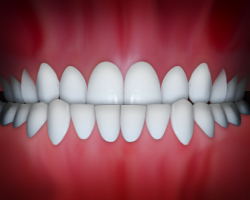 An underbite is characterized by the lower jaw extending too far out, causing the lower front teeth to sit in front of the upper front teeth.
An underbite is characterized by the lower jaw extending too far out, causing the lower front teeth to sit in front of the upper front teeth.
Crossbite
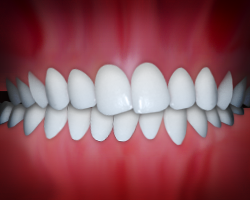 This malocclusion occurs when the upper teeth sit inside the lower teeth, which may cause tooth stratification and misaligned jaw growth. In order to close the mouth, patients usually move their lower jaw forward or to the side when closing. This incorrect bite results in an improper use of the lower jaws and sometimes brings about facial asymmetry.
This malocclusion occurs when the upper teeth sit inside the lower teeth, which may cause tooth stratification and misaligned jaw growth. In order to close the mouth, patients usually move their lower jaw forward or to the side when closing. This incorrect bite results in an improper use of the lower jaws and sometimes brings about facial asymmetry.
Upper Front Teeth Protrusion
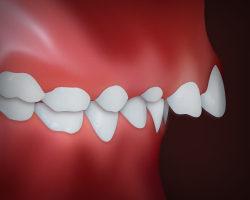 The appearance and function of your teeth are impacted by this type of bite. It is characterized by the upper teeth extending too far forward or the lower teeth not extending far enough forward.
The appearance and function of your teeth are impacted by this type of bite. It is characterized by the upper teeth extending too far forward or the lower teeth not extending far enough forward.
Deep Overbite
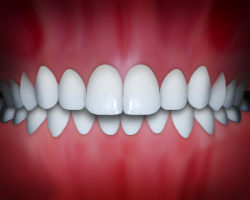 The upper front teeth extend too far out over the lower front teeth, sometimes causing the lower front teeth to bite into the roof of the mouth. Problems often associated with an overbite include a "gummy" smile, protruding lips and excessive incisor wear.
The upper front teeth extend too far out over the lower front teeth, sometimes causing the lower front teeth to bite into the roof of the mouth. Problems often associated with an overbite include a "gummy" smile, protruding lips and excessive incisor wear.
Crowding
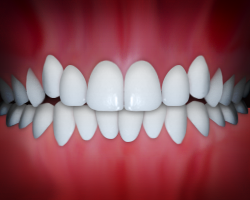 Crowding occurs when teeth have insufficient room to erupt from the gums. It is the most common reason for braces. Not only is crowding unattractive, but it has also been linked to periodontal problems and dental decay because it is harder to clean overlapping teeth's surfaces.
Crowding occurs when teeth have insufficient room to erupt from the gums. It is the most common reason for braces. Not only is crowding unattractive, but it has also been linked to periodontal problems and dental decay because it is harder to clean overlapping teeth's surfaces.
Spacing
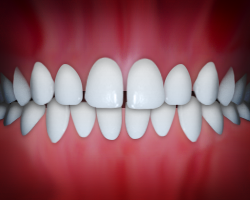 Spacing problems may be caused by missing teeth, or they may only be a cosmetic or aesthetic issue. Spacing is another popular reason for braces. The opposite of crowding, spacing is most commonly caused by excessive jaw room for the size of the erupting teeth.
Spacing problems may be caused by missing teeth, or they may only be a cosmetic or aesthetic issue. Spacing is another popular reason for braces. The opposite of crowding, spacing is most commonly caused by excessive jaw room for the size of the erupting teeth.
Openbite
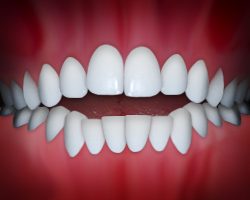 Proper chewing is impacted by this type of bite, in which the upper and lower front teeth do not overlap. Openbite may cause a number of unwanted habits, such as tongue thrusting or thumb sucking. An early evaluation and intervention is essential in correcting an openbite.
Proper chewing is impacted by this type of bite, in which the upper and lower front teeth do not overlap. Openbite may cause a number of unwanted habits, such as tongue thrusting or thumb sucking. An early evaluation and intervention is essential in correcting an openbite.
Dental Midlines not Matched
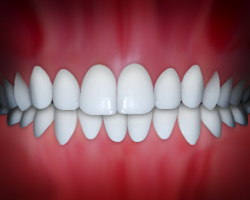 Dental midlines that do not match are evident when the back bite does not fit and match appropriately. This may negatively impact jaw function and proper dental function.
Dental midlines that do not match are evident when the back bite does not fit and match appropriately. This may negatively impact jaw function and proper dental function.
Two-Phase Treatment (Including Preventive/ Interceptive/ Modifying/ Non-Braces Treatments)
Two-phase treatment occurs when a patient is evaluated and needs intervention before starting regular orthodontic treatment, resulting in two separate treatment plans.
The first phase of treatment, Phase I, usually occurs when the patient is a child and still has his or her primary teeth. The Phase I treatment plan can include preventive, interceptive or modifying treatment. Orthodontic appliances may be placed to prevent a problem from occurring, correct a current problem or help direct jawbone growth. Multiple problems with tooth alignment, gums, jaws and facial problems can be corrected with Phase I treatment. Another common added benefit of Phase I treatment is less Phase II treatment time.
Typically, Phase II treatment is normal orthodontic treatment. This involves placing braces on the patient once his or her permanent teeth have erupted. The braces straighten the permanent teeth and finish correctly aligning the patient’s jaw.
Patients who have undergone both Phase I and Phase II treatment are more likely to have lasting results. Our goal for your two-phase orthodontic treatment is to give you correctly aligned teeth that provide ideal jaw function and a great smile!